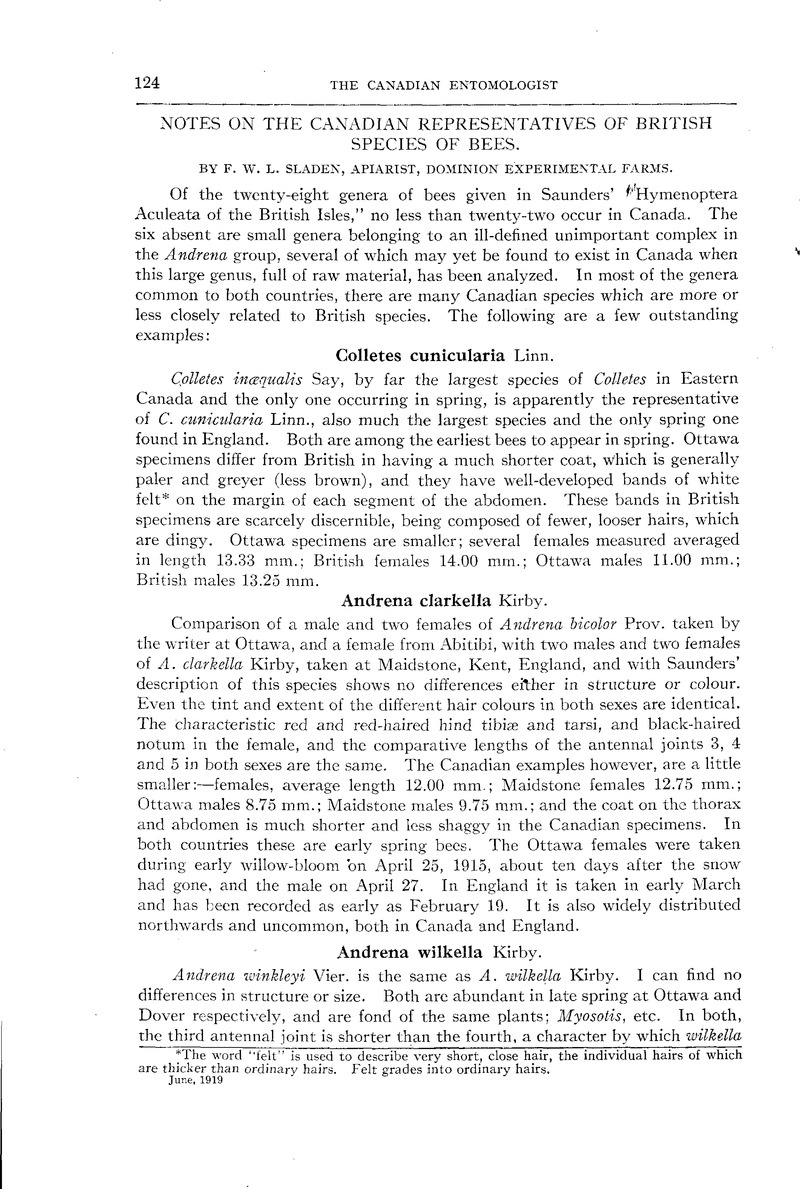Crossref Citations
This article has been cited by the following publications. This list is generated based on data provided by Crossref.
Richards, O. W.
1927.
THE SPECIFIC CHARACTERS OF THE BRITISH HUMBLEBEES (HYMENOPTERA).
Transactions of the Royal Entomological Society of London,
Vol. 75,
Issue. 2,
p.
233.
Zimmermann, Klaus
1931.
Studien über individuelle und geographische variabilität paläarktischer polistes und verwandter vespiden.
Zeitschrift für Morphologie und Ökologie der Tiere,
Vol. 22,
Issue. 1,
p.
173.
Reinig, W. F.
1935.
On the variation ofBombus lapidarius L. and its cuckoo,Psithyrus rupestris Fabr., with notes on mimetic similarity.
Journal of Genetics,
Vol. 30,
Issue. 3,
p.
321.
Medler, J. T.
1964.
Anthophora (Clisodon) terminalis Cresson in Trap-nests in Wisconsin (Hymenoptera: Anthophoridae).
The Canadian Entomologist,
Vol. 96,
Issue. 10,
p.
1332.
Hobbs, G. A.
1967.
ECOLOGY OF SPECIES OF BOMBUS (HYMENOPTERA: APIDAE) IN SOUTHERN ALBERTA: VI. SUBGENUS PYROBOMBUS.
The Canadian Entomologist,
Vol. 99,
Issue. 12,
p.
1271.
Hobbs, G. A.
1968.
ECOLOGY OF SPECIES OF BOMBUS (HYMENOPTERA: APIDAE) IN SOUTHERN ALBERTA: VII. SUBGENUS BOMBUS.
The Canadian Entomologist,
Vol. 100,
Issue. 2,
p.
156.
Milliron, H. E.
1970.
A Monograph of the Western Hemisphere Bumblebees (Hymenoptera: Apidae; Bombinae).
Memoirs of the Entomological Society of Canada,
Vol. 102,
Issue. S65,
p.
i.
Owen, R.E.
Otterstatter, M.C.
Cartar, R.V.
Farmer, A.
Colla, S.R.
and
O’Toole, N.
2012.
Significant expansion of the distribution of the bumble beeBombus moderatus(Hymenoptera: Apidae) in Alberta over 20 years1This paper is dedicated to the memory of Adolf Scholl..
Canadian Journal of Zoology,
Vol. 90,
Issue. 1,
p.
133.
Sheffield, Cory S.
and
Perron, Jean-Marie
2014.
Annotated catalogue of the bees described by Léon Provancher (Hymenoptera: Apoidea).
The Canadian Entomologist,
Vol. 146,
Issue. 2,
p.
117.
Satyshur, Colleen D.
Evans, Elaine C.
Forsberg, Britt M.
Evans, Thea A.
and
Blair, Robert
2023.
Determining Minnesota bee species’ distributions and phenologies with the help of participatory science.
PeerJ,
Vol. 11,
Issue. ,
p.
e16146.



